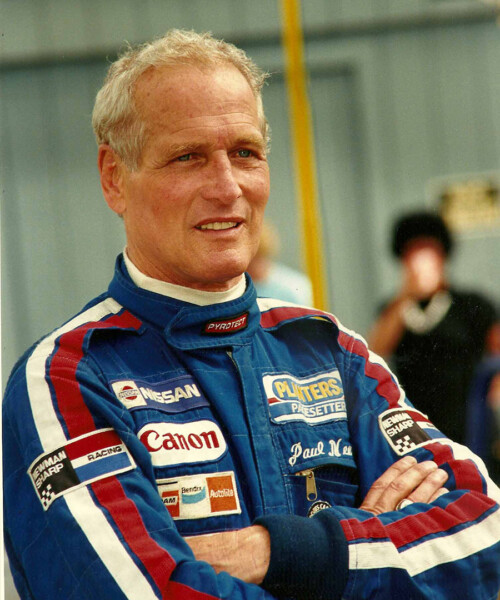We like to believe that we know the actors we watch in film and television personally, often altogether forgetting that they are paid professionals who are as complex (and flawed) as the rest of us. That feeling is amplified in the case of mega-stars like Paul Newman, whose blue-eyed charm and relatability endeared him to audiences during a career that spans half a century. Generations of men wanted to be him and women wanted to be with him. Newman, the icon and sex symbol, is a cultural institution, but the question remains, “what did we really know about Paul Newman the man?”
Adam Carolla, comedian and director of the documentary Winning: The Racing Life of Paul Newman (available on-demand May 22), says, “If you really want to find out what someone is into, find out what they’ll do for free. I don’t think you could get him [Newman] in a movie for free, but he’d definitely drive a car for free.” The film, based on the book by Matt Stone and Preston Lerner, is a chronicle of Newman’s four decades at the track as both driver and team owner. It is the story of a man seemingly already at the top of the world who fell in love with auto racing at the age of 47—the age most drivers are retiring—to enter a new chapter in his life.

Newman attended Bob Bondurant’s school in preparation for his role in the 1969 racing film Winning, and he got hooked. After the film wrapped, he continued driving, racing a boxy Datsun in amateur classes and logging countless laps on open test days at Lime Rock Park near his home in Connecticut. Slowly and steadily he climbed his way up the ranks to collect four national SCCA championships and a podium finish at the 1979 24 Hours of Lemans. While it’s general knowledge that Newman had a love of racing, it’s not widely understood how good he actually was—this wasn’t a celebrity showing up once a year to a pro-am event. Racing became a defining obsession to the extent that close friend Robert Redford would say, “He became so boring, that [racing] was all he talked about…I’d say ‘how you doing?’ and he’d tell me about the car…it started to drive me crazy.”
Racing devotees will spend a lot of time talking about how the camaraderie between drivers is the draw, but for Newman it was something much deeper and more personal. To climb into a car and drive it at its limits with the sustained focus that Newman did, one might argue, was about self-discovery, tuning out the rest of the world with meditative concentration. Of course, along the way you find individuals on the same paths, but it is always about that time alone in the car.
While Winning does not have the stylistic dynamism that other motorsport docs like Senna may have, Carolla’s no-frills filmmaking style matches Newman’s straight-talking, no-bullshit aura. The film merely scratches the surface of Newman’s racing career, but it will serve as the keystone to Carolla’s larger project of becoming, as he describes, “the unofficial Paul Newman Racing curator.” In addition to the documentary, Carolla restores and races Newman’s cars, and he has been collecting and archiving any Newman racing-related memorabilia he can get his hands on in the hopes of eventually opening a museum.
Fans of both the Newman the actor and Newman the driver shouldn’t miss this reverent glimpse into an icon’s off-screen life. Like many of the characters he played on screen, Newman was a hard-charging, genuine article, best summed up by fellow driver and friend Willy T. Ribbs: “Newman was on Viagra before they even made Viagra. He was a hard dick brother.”
Photographs by Bob Sharp






































